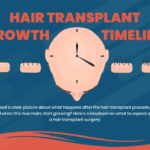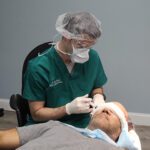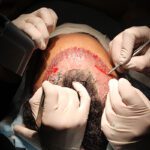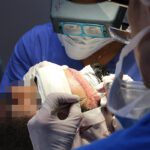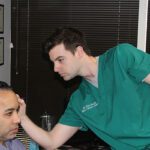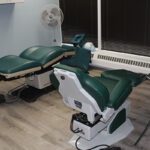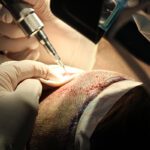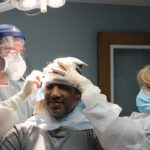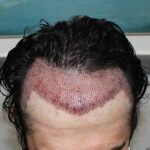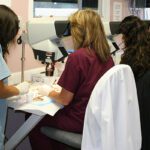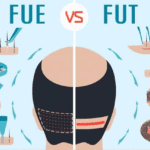What to Expect After a Hair Transplant Surgery
Before the surgery
So, you’ve decided to take control of your hair loss. You may have tried medical therapies that only function to slow hair loss and thicken miniaturized hair, but they do not stop the progression of hair loss. You’ve weighed the pros and cons of the different proven treatments and finally decided to undergo a hair transplant, a permanent solution that will give you lifelong natural-looking results. You have done your homework and researched the different clinics and what they can offer you. You have even learned about the basics of the different surgical procedures. You’ve gone on consultations, chosen a surgeon, scheduled your surgery, and followed the pre-op instructions to a “T.”
Day of the surgery
Now the big transformative day is here! You arrive at the surgical clinic often tired because of a restless night due to the excitement of a new you, a new chapter, and also often due to undue anxiety over the process. As part of the planning, the physician draws on the hairline where it would be best, and you’ll have an opportunity to provide input. Then you will be prepped for the procedure. Local anesthesia is administered, and the grafts are harvested after the anesthetics have taken effect. For those patients undergoing a FUT, or strip procedure, after the strip is excised and the scalp is sutured, it is all downhill from here, realizing that the most anxiety-inducing part is over. The recipient site is prepared, and thousands of tiny slits are made to receive the hair follicles that have been dissected down to the individual units. During this time, most patients will doze off. Depending type of harvesting procedure and the number of grafts to be transplanted, your surgical day can last from a few hours to a full 8 hours.
Immediately postoperative
The procedure is done, and all the grafts have been successfully transplanted. The recipient area will appear swollen, shiny, and slightly reddened immediately afterward. These signs of inflammation are part of the normal healing process. The recipient site has the appearance of a buzz cut with its newly transplanted grafts. Now you can see the beginnings of the new frame to your face.
The duration of the redness and swelling depends on skin type and color, with sensitive and fairer skin colors showing signs of healing longer. Swelling usually peaks in the first two days and then begins to resolve over a few more days. Depending on skin type and color, the redness may take up to a week to fade.
Post-op days 1 to 4
Please wash your hair as instructed! Wounds heal best when they are moist and clean. You should expect to see some scabbing around the grafted follicles. You follow the post-op instructions and very gently rinse your scalp with soapy water during this delicate phase. You want to avoid direct pressure on the grafts because it takes 4 days for the grafted hair follicles to “anchor” in and begin to take permanent root. During these first few days, they are vulnerable to becoming dislodged if they are bumped, rubbed, or touched too vigorously. During this time, you may see some swelling of the forehead, eyelids, and cheek. This is normal as gravity assists in returning this fluid accumulation to the central circulation.
During these first few days, you will sleep with a 45-degree incline with something supporting your neck like a travel pillow. This awkward sleeping position is necessary to help protect the grafts from being dislodged while you sleep and helps to minimize swelling. You also want to avoid looking down for prolonged periods, such as when using your cell phone.
Post-op days 4 to 10
Starting post-op day 4, you continue carefully caring for the grafts by gently washing them with only your fingertips. You want to follow proper washing techniques to keep the area clean, moist, and free of excess scabbing, as this will promote healing. During this phase, you notice a significant decrease in swelling and redness. After a week, you are excited because the grafts seem happy in their new home and may have even grown a little. By day 10, the grafts are fully anchored in place. The sutures or staples that have been placed in the donor region are typically removed at day 10. It is after the sutures or staples have been removed that we recommend you trim the rest of your hair if desired. Day 10 is when you can return to normal activities, and many clinics will allow patients to resume regular exercise routines at this time.
Post-op two weeks and beyond
As you get used to the newly implanted grafts, you may have some slight disappointment as they begin to shed, which typically occurs after the second to fourth postoperative week. You may worry you are losing grafts, but this is not the case because the follicle’s stem cells are safe under the skin. The shedding of the hair shafts is part of the normal growth cycle. And it is at this time that the follicles go into the resting phase of the growth cycle, leaving you with the same hairline you had just before the surgery. But there is no need to agonize because this resting phase only lasts between 3 and 4 months before they re-enter the active growth phase, at which point you begin to notice the transplanted hairs are starting to grow. By the 6th month, you typically have a significant amount of growth, and your new hairline is literally taking root. This process continues over the next 12 to 18 months, where the density and hair shaft diameter will continue to thicken, yielding the final result.
These are average time frames as some individuals grow more quickly while others may take a little longer. The key during this process is patience as the transplanted follicles reset and begin to go through their normal growth cycles. Hair transplant results are not immediate, but they are a permanent solution that will considerably improve your appearance and boost your self-confidence for a lifetime.

